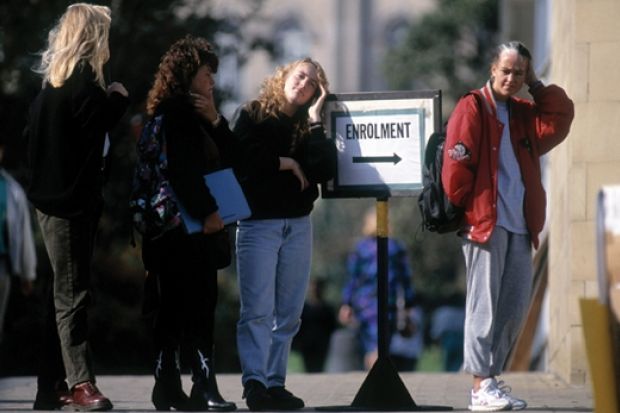A cut of 5,000 student places announced in the 2012 grant letter could be the first in a series of measures to reduce the costs of the new funding regime, according to a leading sector analyst, including raising the interest rate on student loans and another hike in tuition fees.
Last week the Department for Business, Innovation and Skills wrote to the Higher Education Funding Council for England setting out budgets and priorities for 2012-13.
The total recurrent funding for teaching and research was as expected, and the letter indicates that the sector will receive an increase in funding of 5.6 per cent in nominal terms between the current academic year and 2013-14 as a result of the additional fee income.
But BIS also lays out plans to cut the maximum number of students Hefce can fund by 5,000 in 2012-13. It argues that this "does not represent a reduction in the total number of students the government expects to fund" because previously the Hefce maximum had been "slightly above" the number of places the government assumed would be taken up.
It adds that this cushion between the maximum and those actually recruited was no longer necessary because of the "recent trend for strong recruitment across the sector".
However, Bahram Bekhradnia, director of the Higher Education Policy Institute, said it was "clearly a cut" in student numbers because institutions would recruit up to their maximum.
Several of the university mission groups, as well as the National Union of Students, also viewed it as a cut in places.
The grant letter also states that because the cost to the government of over-recruitment will rise "significantly" under the new funding arrangements, the fines imposed on institutions would "increase accordingly".
For 2011-12, universities will be fined £3,800 for every undergraduate they recruit above the number they are allocated.
Mr Bekhradnia said that if the charge for over-recruitment was increased, universities would recruit fewer students. "That is bad news because we have many disappointed applicants already," he said.
He argued that the cut in student places was a sign that the government was revising upwards its estimates of how much the new system would cost.
In August last year, Hepi produced an analysis that claimed that the coalition had seriously over-estimated the proportion of student loans that would be paid back.
"People have been telling [ministers] that the costs of this policy are going to be much higher than they think," Mr Bekhradnia said. "This first 5,000 cut is part of this reassessment exercise."
He added that the government was "stuck" between two politically difficult policy options: raising tuition fees further or cutting student numbers.
He thought the latter would be easier as raising the fee cap to £9,000 had led to rioting in December 2010.
The 5,000 places represent 1.3 per cent of the 384,649 applicants enrolled last year.
Sir Alan Langlands, chief executive of Hefce, said at a Hepi seminar in Westminster last week that the grant letter contained "no financial shocks and no policy surprises".
He also pointed out that it explicitly praised the value of universities as bodies for advancing knowledge "for its own sake".
He added: "If we value our students simply for what we can get out of them, or what they might earn in the future, we do them a great disservice and they in turn will estimate our value by what they can get out of us.
"That sort of relationship would be damaging to the soul of higher education and it's not what students want - they are much more enlightened than that."
Speaking at the same event, John Coyne, vice-chancellor of the University of Derby, said that universities "have ended up with a grant letter that's probably the envy of other parts of the public sector, because the numbers [in terms of the total cash grant] have gone up".
He added: "If the letter was delayed because some arm-wrestling was going on [by Hefce and BIS with the Treasury], then it was worth the wait."
david.matthews@tsleducation.com
Facts and figures: Hefce's 2012-13 grant letter
• Maximum student numbers cut by 5,000
• Fines for over-recruitment to increase each year
• No repeat of 10,000 additional student places
• Teaching grant falls 18 per cent to £3.815 billion, replaced by student loans, which rise 38 per cent to £3.6 billion
• Recurrent research funding steady at £1.587 billion
• Total funding to rise from £9.309 billion in 2011-12 to £9.829 billion in 2013-14
• No decision on whether to lower grade threshold of AAB policy in 2013-14
• Widening participation premium retained
• Access to Learning Fund, for students in hardship, cut by £10 million to £30 million
Register to continue
Why register?
- Registration is free and only takes a moment
- Once registered, you can read 3 articles a month
- Sign up for our newsletter
Subscribe
Or subscribe for unlimited access to:
- Unlimited access to news, views, insights & reviews
- Digital editions
- Digital access to THE’s university and college rankings analysis
Already registered or a current subscriber? Login
